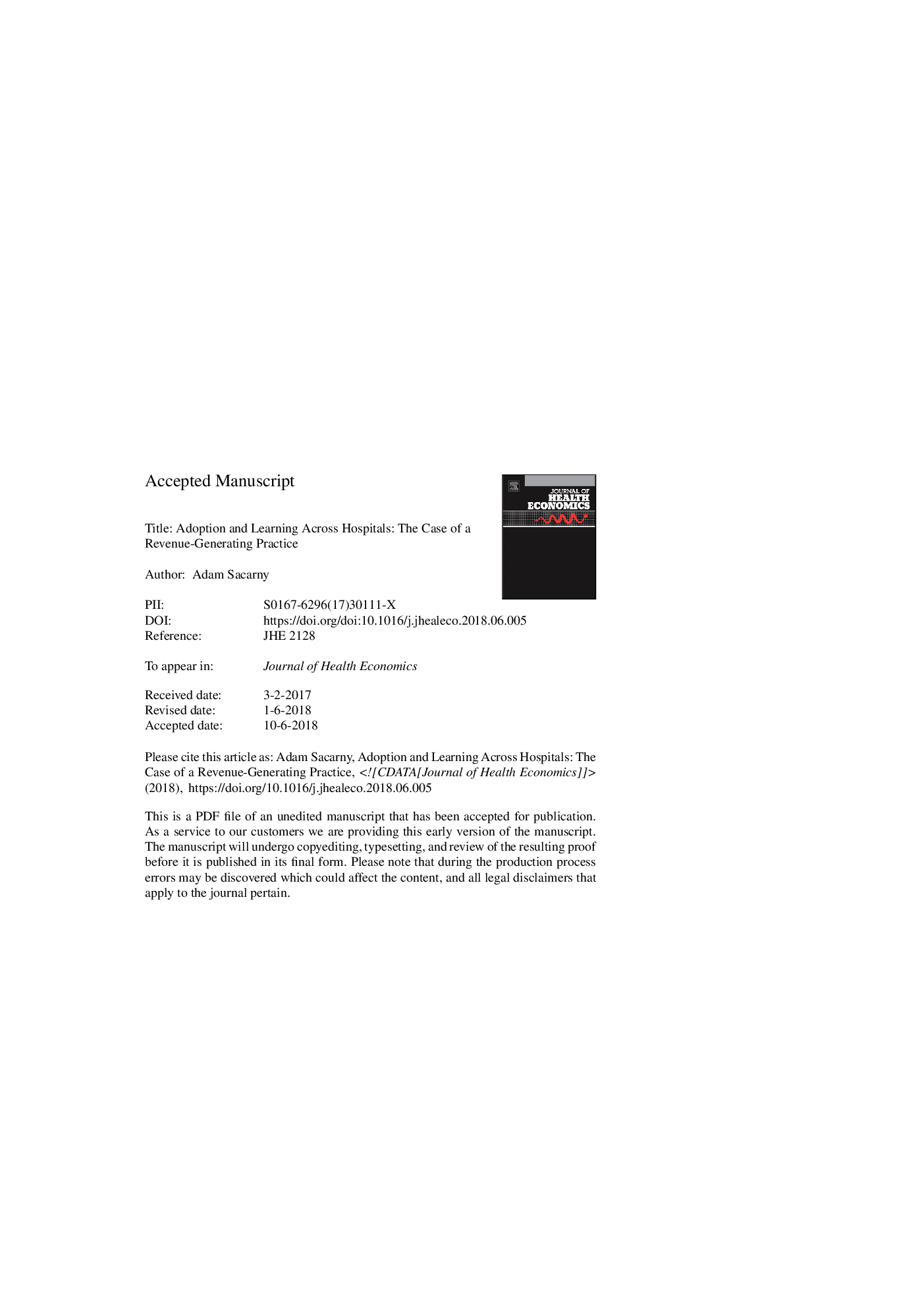| Article ID | Journal | Published Year | Pages | File Type |
|---|---|---|---|---|
| 7362731 | Journal of Health Economics | 2018 | 84 Pages |
Abstract
Performance-raising practices tend to diffuse slowly in the health care sector. To understand how incentives drive adoption, I study a practice that generates revenue for hospitals: submitting detailed documentation about patients. After a 2008 reform, hospitals could raise their Medicare revenue over 2% by always specifying a patient's type of heart failure. Hospitals only captured around half of this revenue, indicating that large frictions impeded takeup. Exploiting the fact that many doctors practice at multiple hospitals, I find that four-fifths of the dispersion in adoption reflects differences in the ability of hospitals to extract documentation from physicians. A hospital's adoption of coding is robustly correlated with its heart attack survival rate and its use of inexpensive survival-raising care. Hospital-physician integration and electronic medical records are also associated with adoption. These findings highlight the potential for institution-level frictions, including agency conflicts, to explain variations in health care performance across providers.
Related Topics
Health Sciences
Medicine and Dentistry
Public Health and Health Policy
Authors
Adam Sacarny,
